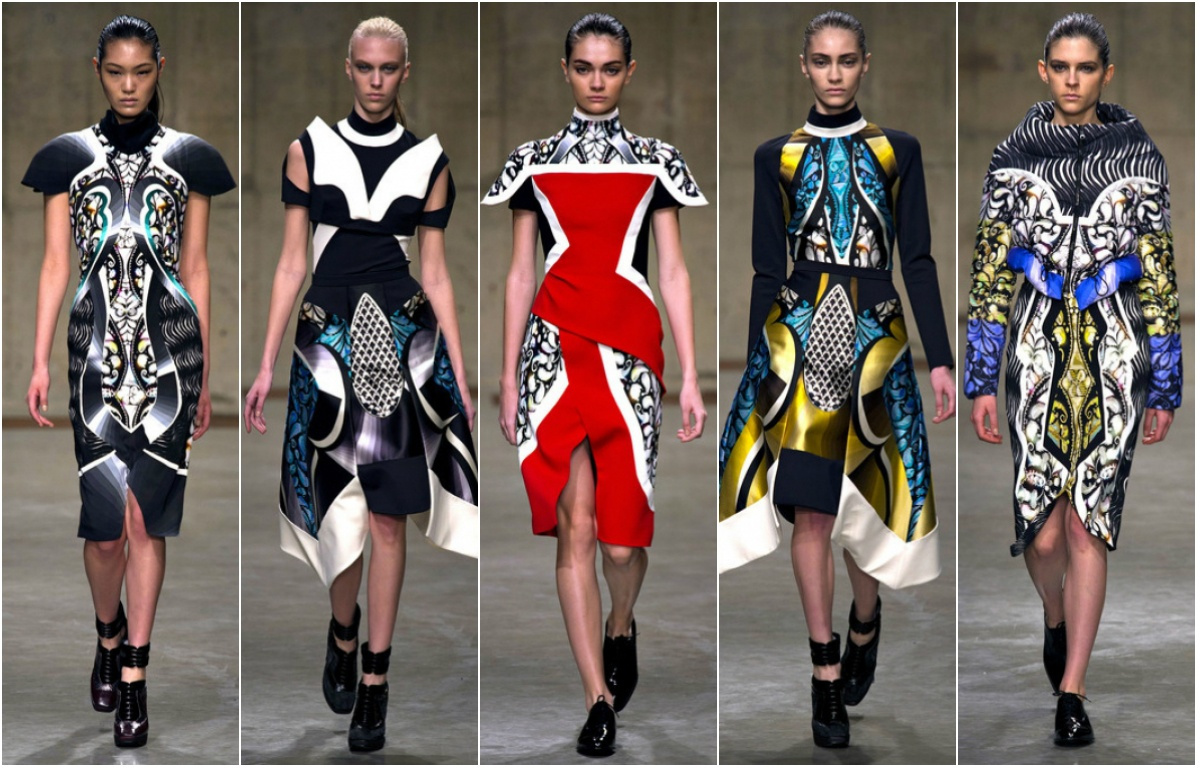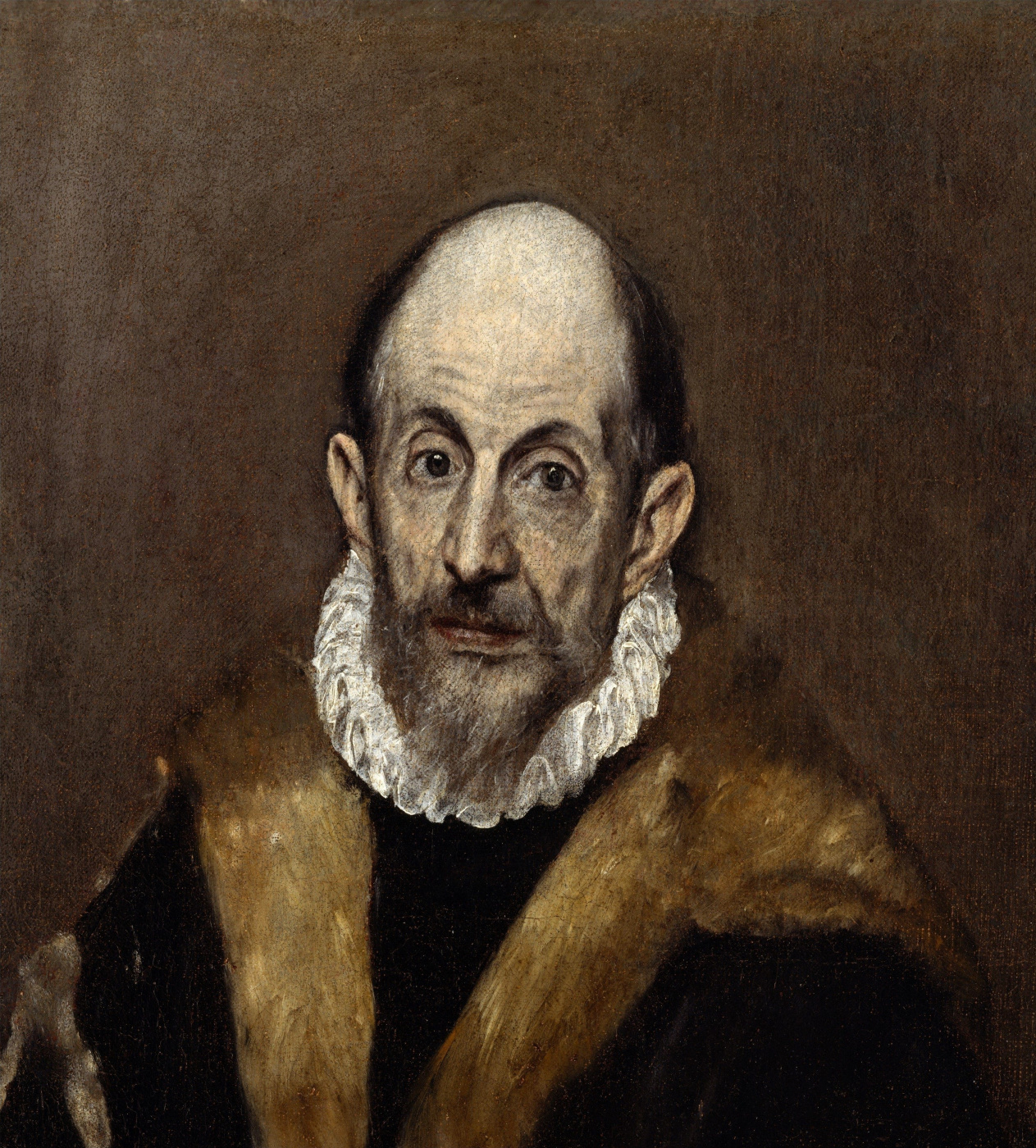
Autograph
"Created by the Cretan Domenikos Theotokopoulos" — the outstanding Spanish artist signed his works with his real name, often putting a reminder of his origin right in the centre of the canvas, next to the face of the portrayed aristocrat or the face of Christ. El Greco (i.e. the Greek) is the nickname that the Spaniards gave to Theotokopoulos. And they seem to know a lot about naming and branding. Any marketer would say: the history of art and the public could have ignored the extraordinary talent of the Cretan, if he didn’t have the laconic, sonorous pseudonym along with the unpronounceable real name.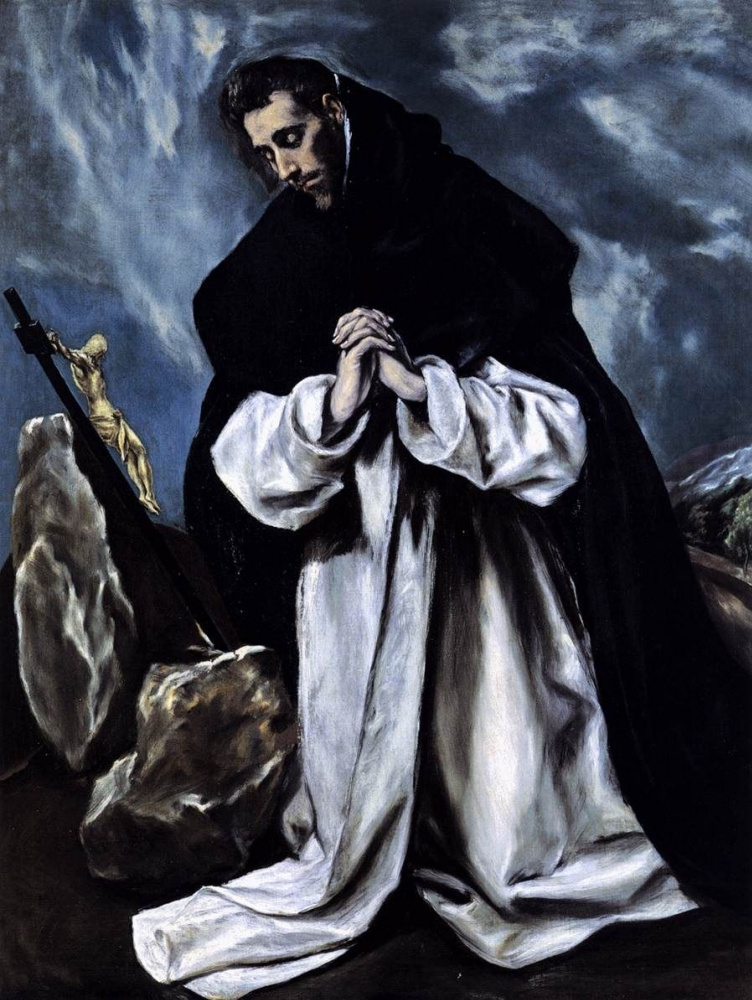
The style
El Greco is famous because he is recognizable. Disproportionate figures hovering in the air, with elongated ascetic faces and bodies, resembling either flame shapes or melted candles — you cannot confuse them with anyone. Attempts to understand El Greco were desperate. They tried to write off the lankiness of the subjects now on squint and astigmatism, then on marijuana, then on general madness, traditionally associated with genius.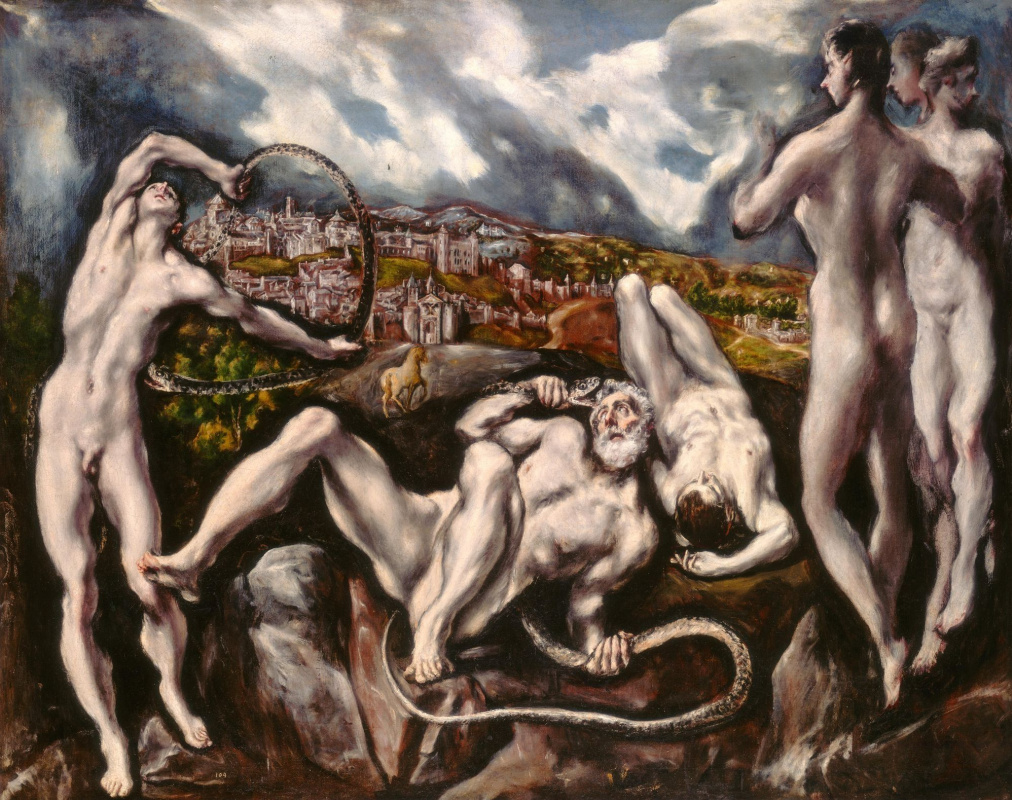
They thought that his signature style was the result of the imposition of the Byzantine technique of icon painting, which the artist mastered in his homeland, with the techniques he learned in Italy. And they did not take into account what now seems obvious. El Greco tried to capture and depict the internal structure of man and humanity. And he easily sacrificed external reliability in pursuit not for facts, but for feelings, meanings, essence — both earthly and cosmic, divine.
(El Greco. Laocoon (c. 1610). Washington, National Gallery)
The language
El Greco spoke his native Greek wherever he could. However this is not the point; no matter what language he spoke, the Greek was stinging and unbearable. However, the Spaniards should be only happy about this, and we all too. If Domenikos Theotokopoulos were more delicate and tactful, he could well have become another Italian, rather than the great Spanish artist. This is what our final story is about.When the future El Greco was in Rome, the shameful figures depicted in The Last Judgment fresco were heatedly discussed there. The idea of painting the Sistine Chapel altar wall did not seem blasphemous to the newcomer Greek. He argued that he would have painted it all over again, no worse and more chaste. And about the already deceased Michelangelo, he said: "Apparently, he was a good man, but he could not paint". They say that local artists did not forgive him for this. Therefore Domenikos Theotokopoulos had to make his way from the Italian to El Greco.
The actuality
In 1919, London National Gallery acquired El Greco’s Agony in the Garden. Describing the impression made by the new piece on the public, art critic Roger Fry noted that people were as if "struck by an electric shock": crowds gathered at the canvas, someone was delighted, someone was furious. The museum attendants kept silent about the sensational amount paid for the canvas, so the excitement around the painting, whose author died three centuries ago, seemed inexplicable to Fry at first.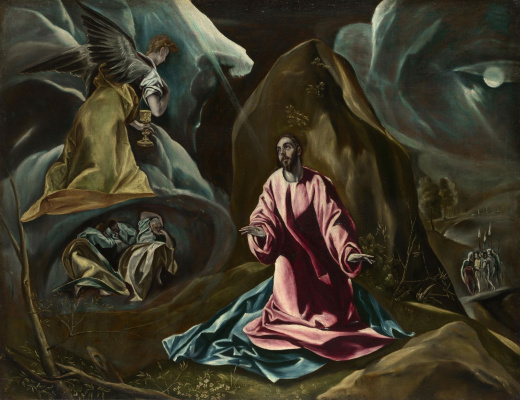
However, Fry himself found an explanation: the public praised and scolded the Agony as if El Greco was their contemporary, with whom they could argue or agree, rather than a legendary painter from the past, the only permissible reaction to whom was lingering reverence. And not just a usual contemporary — an innovator, even by the standards of the twentieth century.
The cities
Heraklion is a city in Crete, where Domenikos Theotokopoulos was born, lived until the age of 26 and became a good icon painter.Venice is where he studied in the studio of Titian and got inspired by the work of Tintoretto, who influenced him almost most.
Rome is the city, where Theotokopoulos absorbed the Mannerist aesthetics and painted religious subjects at the request of the cardinal.
Madrid is where Domenikos the Greek tried to become the court painter of King Philip II, but they had different characters and artistic tastes.
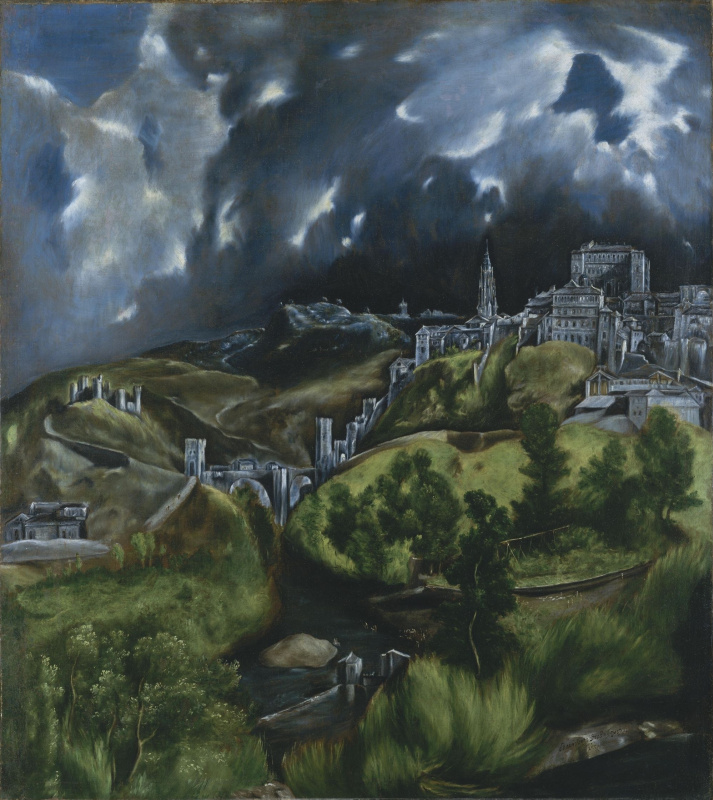
Toledo is the ancient Spanish capital, where he lived from 1577 until his death, became El Greco and created his best canvases, including the rare thing of his, the Thunderstorm over Toledo landscape. More than 60 paintings from 29 cities around the world arrived in Toledo in March 2014 for the largest exhibition of El Greco’s works in history.
New York — the museums of this city have an impressive collection of El Greco. Even the Thunderstorm over Toledo is kept in the New York Metropolitan Museum.
Ducats
El Greco highly appreciated his work, issued immodest invoices to his customers, and if they began to bargain, he sued. This was the case with his El Espolio (also known as The Disrobing of Christ).
The artist asked 900 ducats (20 ducats was the price for a cow then) for the huge canvas painted for the altar of the Cathedral in Toledo. However the church officials saw the violation of the iconographic norms and agreed to pay only 227. The artist managed to sue only 350 ducats.
El Espolio is in Toledo to this day, and its versions are in the English city of Banbury and Munich. It was so popular that El Greco made 17 (!!!) copies of it. Many of his paintings exist in different versions. Sometimes the artist was looking for the ideal. Sometimes he worked just for living, and called for the help of apprentices. For example, the aforementioned Agony in the Garden is now on display at the National Gallery in London and signed El Greco’s Studio. Admittedly, the artist had copies of different quality.
Cinema
Sergei Eisentstein called El Greco the forerunner of cinematography: he made many of his paintings from several angles at once. Individual figures and objects by El Greco are flat (he did not like 3D effects and contemptuously called three-dimensional characters in the works of Italian Renaissance artists painted sculptures), but his paintings are not just multidimensional, they are filled with inner movement.From the moment of the invention of cinematography to this day, numerous directors, cameramen, and production designers have been trying to convey the variety of colours, feelings and meanings in 50 shades of grey, peeping them at El Greco.
Modernism ?

At the turn of the 19th and 20th centuries, El Greco was declared the founder of modernism, and among his students were Cézanne and Van Gogh, Delacroix and Manet, Kokoschka and Picasso.
By the way, in addition to delicate quotes and curtsies towards the genius art ancestor, Picasso also has a literal imitation, the Portrait of a Painter, after El Greco. From 24 June to 5 October 2014, the El Greco and Modernism exhibition was held at the Prado Museum in Madrid, it showcased works by artists ranging from Cézanne to Pollock.
Nacre
El Greco did not like sunlight, he said it interfered with his inner light, and he sat for a long time in his completely dark studio. But there is a lot of unnatural, mystical light in his paintings, which can be easily discerned even in poorly lit temples and exhibition halls. Canvases by El Greco shine with a mysterious nacre light, the origin of which is quite "technical", albeit unique.First, he covered the canvas with whitewash and put burnt umber on top so that the whitewash would shine through the thinnest brown layer (this is called imprimature). After that, figures were again outlined with whitewash — at this moment a unique pearl glow was born on the canvas, which could not be achieved by mixing paints on the palette alone. Tint paints were applied in a very thin layer, often El Greco made do with only translucent glazes, without resorting to the main colour.
Portraits
El Greco willingly painted wealthy townspeople and church officials because they paid well. Identical black clothes and gigantic ruffled collars, impenetrable, imperturbable faces — it’s amazing that instead of insipid twins, he obtained lively, "captivating" subjects.El Greco did not leave his own face. However, researchers of his work believe that one of the unnamed portraits is the artist (the title photo in the article). El Greco can also be found on his most famous painting, The Burial of the Count of Orgaz. Among the men in black, only one man looks not at the sky, but at the viewer — most likely, this is the artist. And the boy in black in the lower left corner is the artist’s son, Jorge Manuel: he would also master the brush and make copies of his father’s works.
The beautiful lady
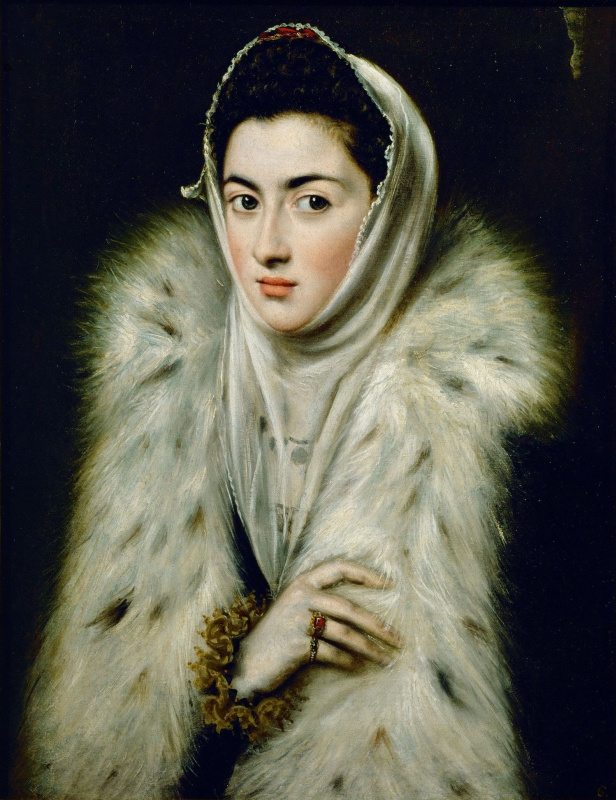
El Greco was never married. The mother of his only child was the aristocrat Jerónima de Las Cuevas. Why didn’t the artist marry is unclear: either because he did not have any titles, or because of his bad temper and pathological independence. We also don’t know what his beloved looked like. For a long time, it was believed that she was the beauty depicted on the Lady in a Fur Wrap painting. But now Renaissance painting experts are inclined to believe that it was painted by some Italian, which means that you’d better look for the features of Jerónima in the El Greco’s paintings with the Madonnas.
The hands
El Greco’s hand is always easy to identify by the hands of his subjects.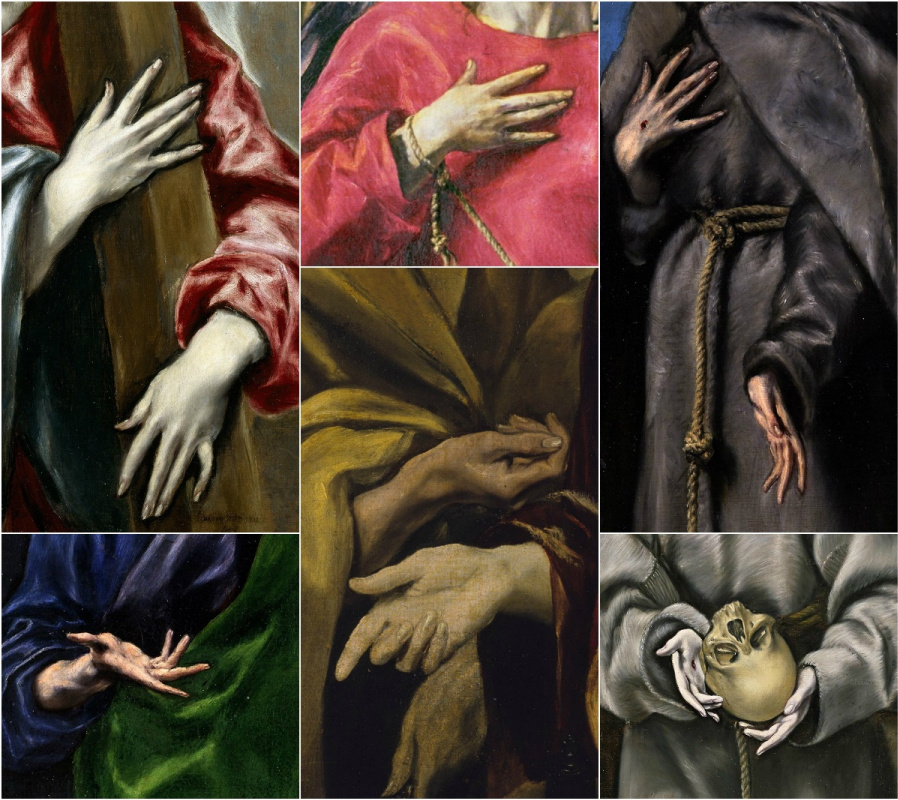
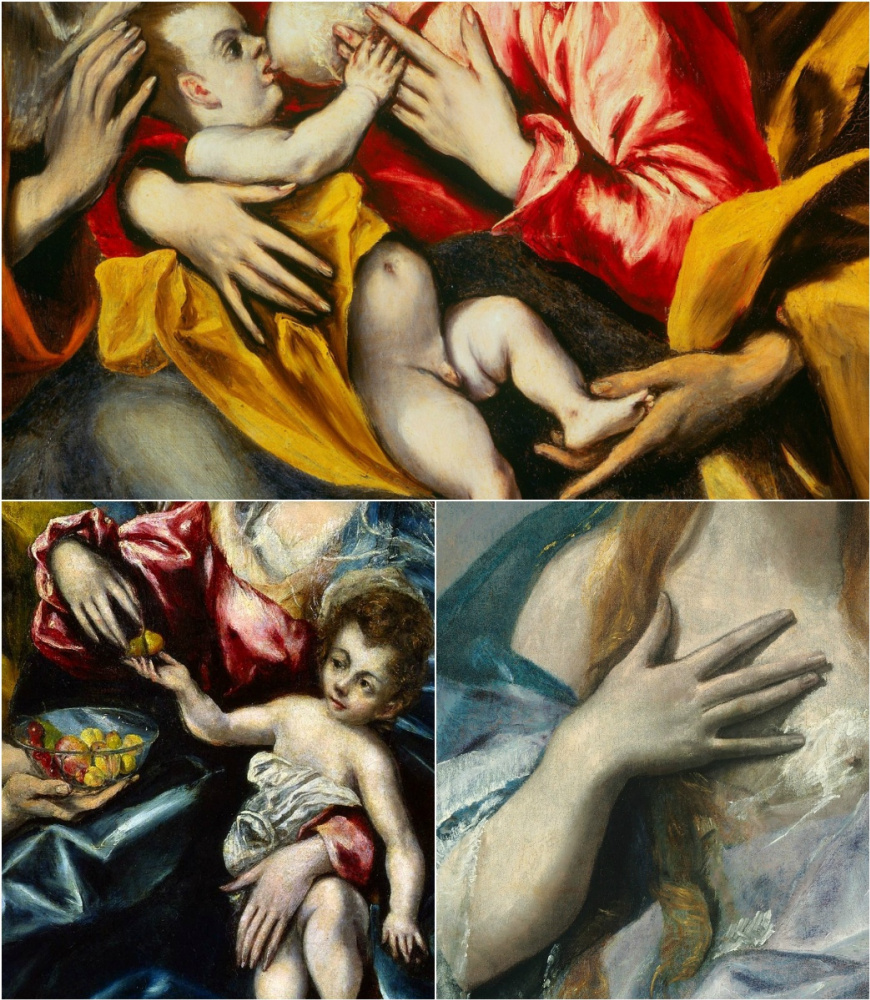
The glory
El Greco became truly famous 300 years after his death. During his lifetime, he had neither school nor individual followers. The artist remained in oblivion for a long time as an "incomprehensible" artist. During his lifetime, he puzzled the public, regardless of their tastes. So, in his View and Plan of Toledo landscape , El Greco depicted a young man with a map of the city in his hands, and on the map he wrote an explanation for what artistic purpose he painted some buildings not where they actually stood. The Renaissance viewer appreciated realism , not originality."The canvases created by the Greek, who bent the rules, stand above us like a vertical cliff of far-off shores. There is no other artist who makes it so difficult for us to enter into his inner world", wrote the Spanish philosopher José Ortega y Gasset. "The austere Cretan throws contemptuous arrows at us from the rocky high coastal cliffs. By his accomplishment, no ships have landed on his land for centuries. Today, this land has become a commercial port teeming with people."
Moreover, today the artist who created in the 16th century is not only a recognized great painter, but also a pop star! Hotels named after El Greco can be found in Crete and Gelendzhik, there is El Greco Restaurant in Lviv. The menu includes not only Greek salad, but also the Italian panna cotta dessert (a kind of bow to the Italian teachers of El Greco).
The fashion
El Greco is an artist who is certainly not as easy for the fashion industry to digest and assimilate as, say, Piet Mondrian. However, the Peter Pilotto designers managed to draw inspiration for their autumn-winter 2013 collection from his canvases. Although, it is not so easy to recognize El Greco’s style in the dresses and coats. Fashion designers Christopher de Vos and Peter Pilotto say they borrowed dynamic, vibrant, conflicting colours from El Greco to make abstractions and patterns out of them to their liking.